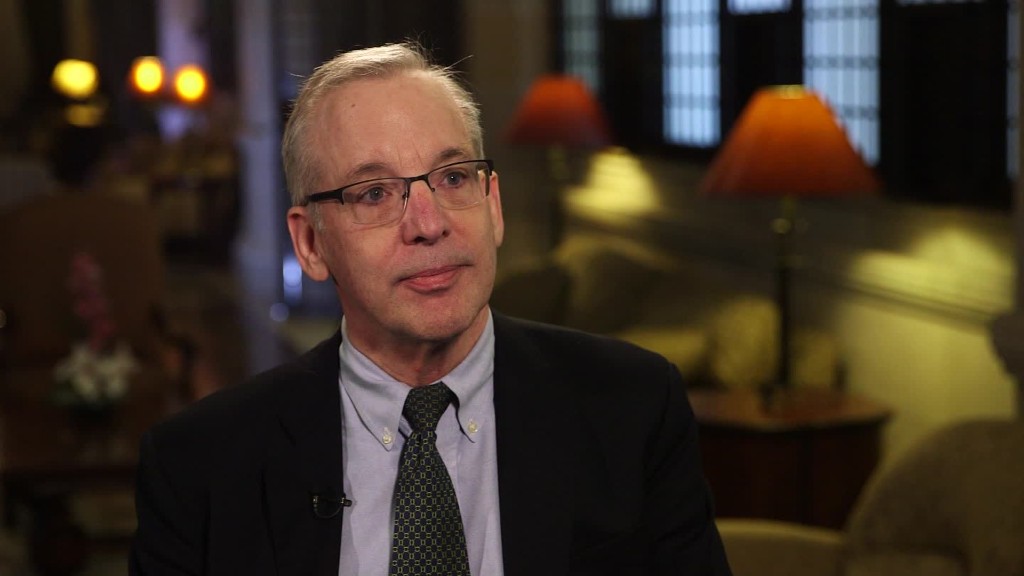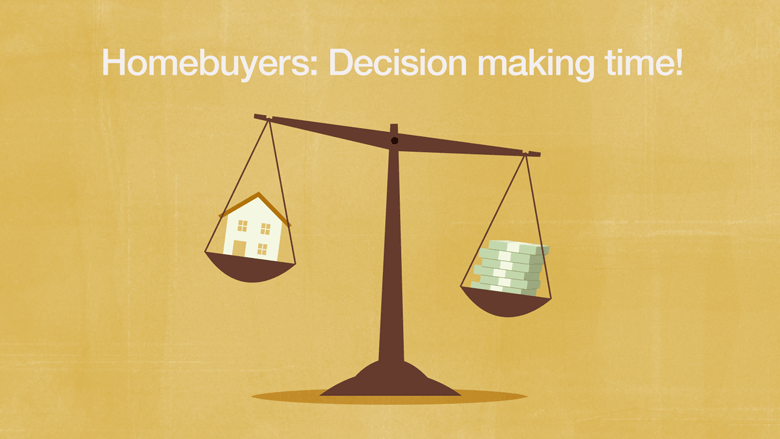
Get ready for another rate hike, America.
The Federal Reserve is expected to raise its key interest rate on Wednesday. It would be the second rate hike since December and a sign that the central bank plans to raise rates faster this year.
One rate hike won't change the world but higher rates affect millions of Americans. If you have a credit card or savings account, want to buy a home or a car, and invest in stocks or bonds, pay attention.
The Fed put rates at zero in December 2008 to resuscitate the collapsed housing market during the Great Recession. America is no longer in crisis mode today, and the economy can bear to pay higher rates for financing. A rate hike is a sign that the U.S. economy is improving.
Here's how the Fed's rate hikes could affect you.
1. Savings accounts will pay more
American savers have struggled for years, earning next to nothing at the bank. Now they could be a step closer to light at the end of that tunnel and earn a little more interest on savings account deposits.
When the Fed raises short-term rates, banks pay customers higher interest on their deposits. But how much higher and how fast they will go up will depend on whether the Fed will keep raising rates.
To start seeing a real difference, it could take one to two years at least, experts say. After all, the Fed is expected to raise by just 0.25% on Wednesday. Most Fed leaders plan to raise rates three times this year, but that could change very quickly depending on the economy's performance.
In December 2015, the Fed said it would raise rates four times in 2016. But that didn't happen: It only raised rates once.
Bottom line: if rates go up Wednesday, it's good news for savers but you still need to be patient.
2. Big ticket buyers: rates are rising but still low
Even though the Fed controls short-term interest rates, its decisions partially impact long-term interest rates for mortgages.
A rate hike does NOT guarantee that mortgage rates are going up. Last year, the Fed did one rate hike and mortgage rates fell in the following months.
However, the rate hike this time comes at a time when the interest on a 10-year U.S. Treasury bond is rising. Mortgage rates are very closely tied to the 10-year note, the yield on which has climbed since the election.

The typical fixed rate on a 30-year mortgage is currently around 4.2%. It's risen significantly since the election because President Trump's promises to cut taxes and increase government spending triggered volatility in U.S. bonds. Before the election, a typical 30-year fixed rate mortgage was 3.5%, according to Freddie Mac.
So rates have risen quickly but they are still low. During the last economic expansion -- 2001 to 2007 -- mortgage rates hovered between 5% and 7%. In the 1990s, rates were even higher, shifting between 7% and 9%.
Over time, as the Fed raises rates more, mortgage rates are expected to move up too.

3. Fed likely won't end the Trump market rally Wednesday
Stock markets used to tremble at the mere hint of a Fed rate hike. When the Fed raises rates, that increases borrowing costs for companies, strengthens the dollar and it can cool down spending plans. All those can factors can pinch profits.
But Trump's promise to rev up infrastructure spending and lower corporate tax rates has U.S. stock markets at all-time highs. And just about everyone -- 95% of investors -- believes a rate hike is coming Wednesday, so it won't be a shocker.
However, if the Fed starts raising rates faster than expected later this year, the stock market's glory ride could hit some bumps as borrowing costs rise and throw a wet blanket on corporate spending plans.
Plus, a strong dollar tends to make U.S. products like iPhones more expensive -- and less attractive -- to foreign buyers.
4. Trump could have to handle a hawkish Fed
President Trump has big plans to spend on overhauling U.S. infrastructure.
He promises to rebuild America's roads, bridges and tunnels. That means the burden of sparking stronger economic growth is shifting to Trump from the Fed. The Fed has tried to prop up the economy since the Great Recession with super low interest rates. The central bank's role should diminish as fiscal policy picks up.
Both sides are certainly looking at different crystal balls. Trump is promising 4% annual growth. The Fed is projecting 2% annual growth until 2019.
But higher government spending could drive up demand for all types of goods. Higher demand could increase the pace of inflation, which has been very sleepy the last few years and a big reason why wage growth has been low.
If inflation gets going, the Fed could raise rates faster to keep up with it.
Along with home mortgages, higher rates increase the interest on credit card payments and auto loans. That could cool spenders' appetite. Consumers make up the majority of economic activity in America.


